In its three weeks of world-class events, Muskfest Berlin has managed to be all things to all people – like a mini-Proms distilling the aspects of top international visitors alongside home-grown excellence, and of a focus on at least one relatively unfamiliar 20th century/contemporary work per concert. The Berliners deserved the cornucopia of very special guests, but to justify my visit, I went for the local – Berlin Phiharmonic, Deutsches Symphonie-Orchester and Berlin choirs on a par with very distinguished counterparts from the UK and Georgia.
It was disappointing that my third train on the day of arrival, from Cologne, ended up 90 minutes late, which meant I missed the whole of the JACK Quartet recital that evening. But it left me with a pleasing symmetry: two Berlin orchestras with their superb chief conductors framing “Prayse! Berlin…[church] office for a city that never sleeps”, a rich programme of choral concerts spread over 24 hours in the most spectacular of 1930s Expressionist churches.
Even that got knocked sideways by the devastating impact of Kirill Petrenko’s Xenakis/Zimmermann/Dallapiccola programme in the Philharmonie (pictured below by Bettina Stoeß, the Berlin Philharmonic and Berlin Radio Choir awaiting the entry of Petrenko and soloists). Too stunned and in need of proper digestion after it to get myself to the first of the seven choral happenings at 00:05, I also decided to catch the Berlin Philharmonic again on its final rendering of a stupendous triptych the following evening, which meant sacrificing the ”Vesper” (sixth) church event – though not the final spectacular with four choirs and a rendering of Tallis’s 40-part “Spem in alium” taking us up to midnight. 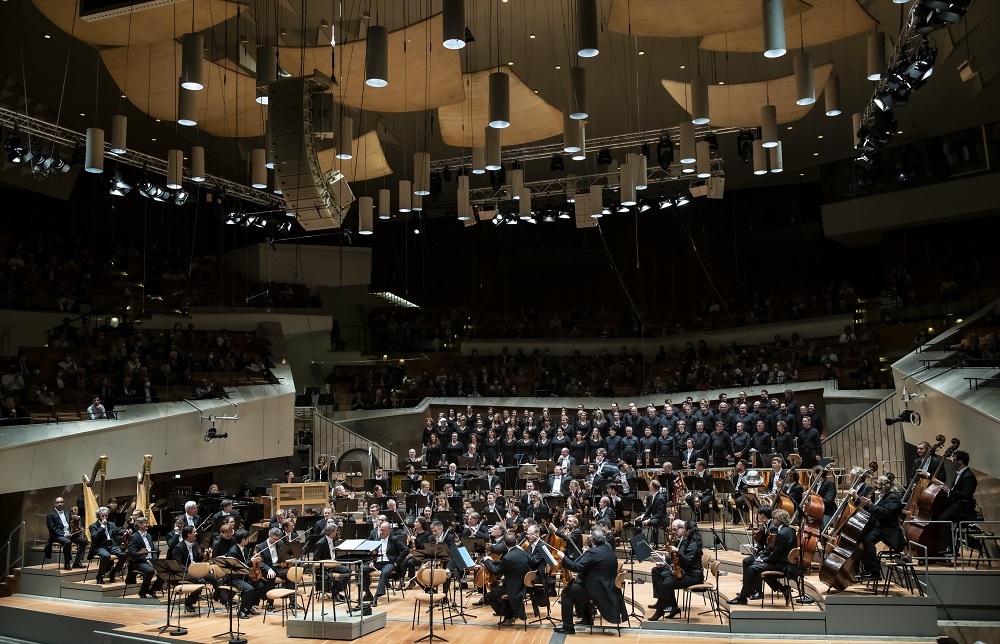 No major regrets here. I have no doubt that I’ll never hear Dallapiccola’s late-1940s one-act masterpiece Il prigioniero (The Prisoner) better played or conducted. It hadn’t worked for me on two previous occasions, but with Petrenko fine-tuning every detail, the eerie prison-cell phosphorences so close on the heels of the team’s unsurpassable Mahler 7 at the Proms, and the Berlin Radio Choir hair-raising in apocalyptic visions, I could hardly fail to get the point here.
No major regrets here. I have no doubt that I’ll never hear Dallapiccola’s late-1940s one-act masterpiece Il prigioniero (The Prisoner) better played or conducted. It hadn’t worked for me on two previous occasions, but with Petrenko fine-tuning every detail, the eerie prison-cell phosphorences so close on the heels of the team’s unsurpassable Mahler 7 at the Proms, and the Berlin Radio Choir hair-raising in apocalyptic visions, I could hardly fail to get the point here.
Apart from coming to terms with a score which has as much to fascinate, in its shorter span, as Berg’s Wozzeck or Lulu – Petrenko must be the supreme interpreter of those operas – there was another advantage to the second performance I heard (actually the third, and the one livestreamed on the orchestra’s Digital Concert Hall). As the nameless protagonist, tantalized by the hope and fellow-feeling apparently his jailer shows him only to find out it’s Philip II’s Grand Inquisitor practising the cruellest joke of all, baritone Wolfgang Koch (pictured below) had the amplitude for the role but not, on Friday night, the character; he seemed rather to be going through the motions. 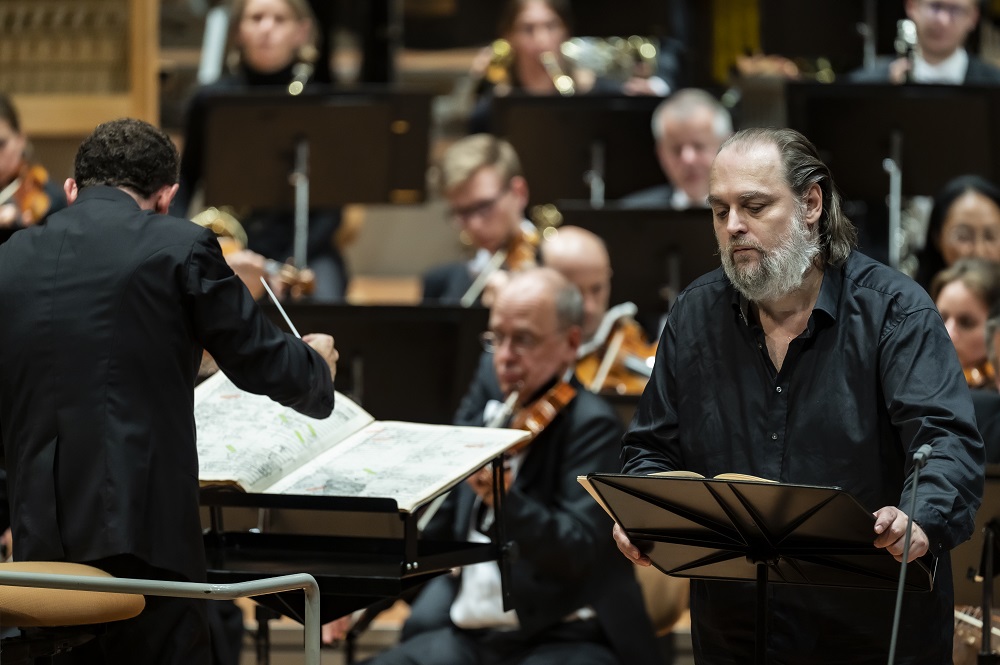 On Saturday, he gave us a proper interpretation to match the easy stage mastery of tenor Wolfgang Ablinger-Sperrhacke as Jailer/Inquisitor and the intensity of Ekaterina Semenchuk as the Prisoner’s Mother, riveting in her dream of the King metamorphosing into Death.. I’d still like to see a febrile performer like Gerald Finley in the main role, but this was enough.
On Saturday, he gave us a proper interpretation to match the easy stage mastery of tenor Wolfgang Ablinger-Sperrhacke as Jailer/Inquisitor and the intensity of Ekaterina Semenchuk as the Prisoner’s Mother, riveting in her dream of the King metamorphosing into Death.. I’d still like to see a febrile performer like Gerald Finley in the main role, but this was enough.
Expressionist thrashes punctuated by still pools of Impressionist expectation linked Il prigioniero to Bernd-Alois Zimmermann’s Symphony in One Movement, packing so much into 15 minutes. The scoring, especially for oscillating woodwind, is if anything even more original than Dallapiccola’s, and Petrenko (pictured below) brought out even more ferocity in the long-awaited slow burn to the end on the Saturday night. Xenakis’s Empreintes made a prelude like no other – brass holding to a single note against smeary strings, effortless transition to rhythmic tattoos and twitches, a shrug of an ending. Could any orchestra play this music better? I hazard a definitive “no”. 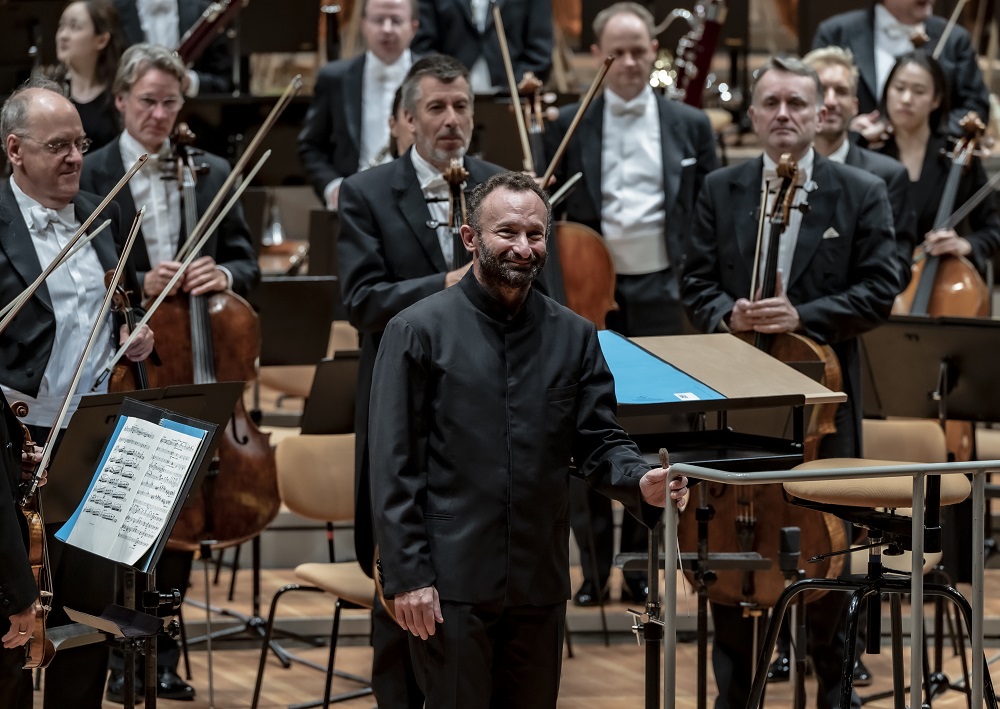 And so from one ground-breaking space – Scharoun’s Philharmonie was so new in its democratic futurism back in the early 1960s, even if it’s never been acoustically perfect – to another. What is now simply called the Church on the Hohenzollernplatz was planned in 1927 to serve the Evangelical community in Berlin’s Wilmersdorf district. Though the Hamburg firm of Fritz Höger took full credit, the innovation was due to architect Ossip Klarwein, who left Germany with his family for what was then Mandatory Palestine.shortly after the church’s March 1933 inauguration. The lofty concrete exterior, clad in brick, houses the elevated nave with its 13 arched girders of ferroconcrete. Gutted by fire in the Allied bombings of 1943, the building was reconstructed twice, in 1965 and again in 1990-1, including new windows by the designer Achim Freyer.
And so from one ground-breaking space – Scharoun’s Philharmonie was so new in its democratic futurism back in the early 1960s, even if it’s never been acoustically perfect – to another. What is now simply called the Church on the Hohenzollernplatz was planned in 1927 to serve the Evangelical community in Berlin’s Wilmersdorf district. Though the Hamburg firm of Fritz Höger took full credit, the innovation was due to architect Ossip Klarwein, who left Germany with his family for what was then Mandatory Palestine.shortly after the church’s March 1933 inauguration. The lofty concrete exterior, clad in brick, houses the elevated nave with its 13 arched girders of ferroconcrete. Gutted by fire in the Allied bombings of 1943, the building was reconstructed twice, in 1965 and again in 1990-1, including new windows by the designer Achim Freyer.
In addition to art exhibitions, the church hosts a half-hour weekly “NoonSong” performed by the professional choristers of sirventes berlin – a backbone to this festival, giving a regular punctuation of Gregorian chant before fully coming into its own, and a match for arguably our very best small-scale professional choir, Tenebrae, who unfolded a banquet of mostly British choral music across the day.. At the concerts I attended, all 500 audience places, free and available online, were taken.
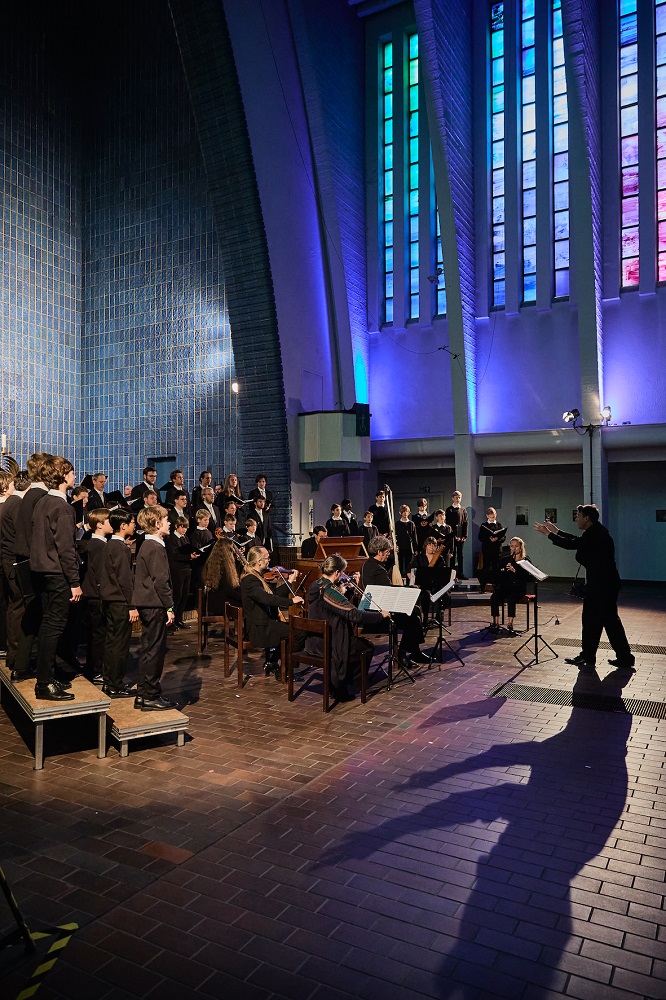 9:15am’s “Terz” combined choristers of the Staats- und Domchor, Berlin’s oldest musical institution, in Tallis, Schütz, Hammerschmidt and Silvestrov’s Prayer for Ukraine – simple, effective – with instrumental support (and interludes) from the city’s Lautten-Compagney (all pictured right by Fabian Schellhorn, with Kai-Uwe Jirka conducting), and the Basiani Ensemble of Tbilisi in a Georgian-Orthodox setting.
9:15am’s “Terz” combined choristers of the Staats- und Domchor, Berlin’s oldest musical institution, in Tallis, Schütz, Hammerschmidt and Silvestrov’s Prayer for Ukraine – simple, effective – with instrumental support (and interludes) from the city’s Lautten-Compagney (all pictured right by Fabian Schellhorn, with Kai-Uwe Jirka conducting), and the Basiani Ensemble of Tbilisi in a Georgian-Orthodox setting.
The ecclesiastical trebles, like the sirventes sopranos, produce a more open sound than that usually heard in our more cowled cathedral tradition, reflected in Tenebrae’s essential timbre. But the British wonder is a multifaceted thing. Our choristers let rip in Giles Swayne’s Magnificat I at the noon “service” and in the biggest surprise (to me) of Walford Davies’s super-lush and harmonically rich "Te Lucis ante terminum", stepping out of the line of quiet late-night reflection at the 23:00 “Komplet”. The other revelation of the “NoonSong” was Parry’s Fantasia and Fugue in G, opening and closing the ritual with shining panache from Daniel Clark on the church’s restored Kemper organ.
Walford Davies’s big blaze apart, the final reflection, at least until the Tallis grand finale, could not have been more inward. The Georgians (pictured below with the Staats- und Domchor in the morning concert) trumped the flash with the quietet singing possible in the liturgical hymn “Tsmidao ghmerto”; sirventes berlin gave us exquisite anthems of peace and sleep from Mendelssohn and Reger, the sort of music Dallapiccola’s Prisoner could only dream of; and Tenebrae signed off its individual contribution with Poulenc’s dream of a Salve Regina – more heartflipping harmonies just before the end. “Spem in alium” always impresses me more as a demonstration of choral sound than what it actually is in substance, but with singers placed all around the massive nave, it made the only possible conclusion. Instant standing ovation, and kudos to those in the “congregation” who made all seven concerts. 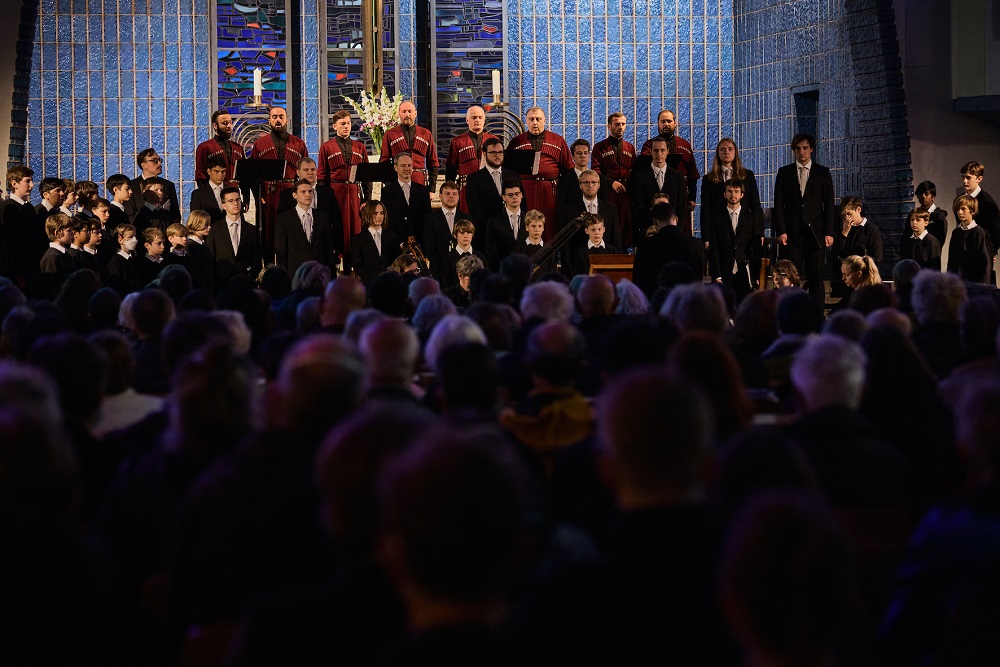 Sunday morning and afternoon provided anchoring, with less walking through the peculiar mass-and-void nature of central Berlin (still half a building site) and more time with musician friends. After a sunny afternoon in a Friedrichshagen garden, the rain was torrential as I got off at Friedrichstraße Station and took a slow walk towards the Philharmonie, There was an exceptional musical happening on the Tiergarten side of the Brandenburg Gate, part of a “Friedensfestival” (Peace Festival) featuring artists from Ukraine, Germany and Russia. It happened to be the turn of consummate Russian bayan (accordion) player Yuri Shishkin, taking us through the whole of Gershwin’s Rhapsody in Blue with peerless musicianship. It held me for a quarter of an hour in the cold and damp before the bright lights of Scharoun’s music-temple beckoned.
Sunday morning and afternoon provided anchoring, with less walking through the peculiar mass-and-void nature of central Berlin (still half a building site) and more time with musician friends. After a sunny afternoon in a Friedrichshagen garden, the rain was torrential as I got off at Friedrichstraße Station and took a slow walk towards the Philharmonie, There was an exceptional musical happening on the Tiergarten side of the Brandenburg Gate, part of a “Friedensfestival” (Peace Festival) featuring artists from Ukraine, Germany and Russia. It happened to be the turn of consummate Russian bayan (accordion) player Yuri Shishkin, taking us through the whole of Gershwin’s Rhapsody in Blue with peerless musicianship. It held me for a quarter of an hour in the cold and damp before the bright lights of Scharoun’s music-temple beckoned.
Of the Berlin Philharmonic’s very fine fellow-citizens among orchestras, the Radio Symphony Orchestra had appeared earlier in the Musikfest under its inspirational music director Vladimir Jurowski, prefacing Bartók and Mahler with Xenakis. Equally dedicated programme-building has been going on at the Deutsches Symphonie-Orchester with Jurowski’s succedssor at Glyndebourne, Robin Ticciati, equally persuasive in offbeat repertoire. Later in the month he will give Berlin the befefit of all his hard work on Ethel Smyth’s The Wreckers, using most of the Glyndebourne soloists alongside German choral and orchestral forces. On the Sunday evening he came up with an absolute stunner of a programme. The ghostly-delicate, very gradual colour-shifts of Morton Feldman’s Coptic Light – not quite the ones offered in the welcome lighting changes above and around the orchestra – suggested one sort of nature in the first half, the different but equally convincing evolutions of Sibelius’s forest-roar Tapiola at the end of the second another.
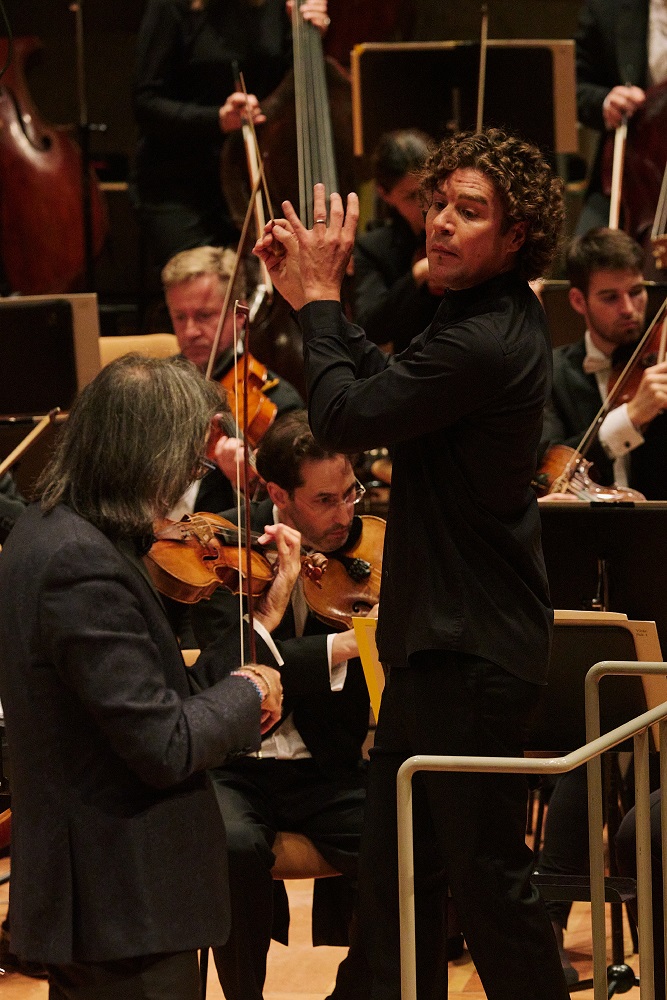 If there was any disappointment, it came not in the superb idea of introducing sharp, playful angles in between in the vivacious form of Stravinsky’s Violin Concerto, but in the manner of the top soloist, Leonidas Kavakos. This of all concertos needs the most collaborative approach between violinist and orchestral players. Masterly though his interpretation was in itself, we didn’t see that from Kavakos; it felt like Ticciati was having to do all the tab-keeping (the two pictured left by Shauna Summers). But there seemed to be the best kind of collegiality between orchestral members – good vibes throughout from them and the audience – and it looks as if they value Ticciati’s special and painstaking way. This is the first time I’ve heard Tapiola placed last in a concert rather than first, and Ticciati’s incendiary, fast-moving way with it – so very different from Klaus Mäkelä’s with the Oslo Philharmonic at the Proms – justified that.
If there was any disappointment, it came not in the superb idea of introducing sharp, playful angles in between in the vivacious form of Stravinsky’s Violin Concerto, but in the manner of the top soloist, Leonidas Kavakos. This of all concertos needs the most collaborative approach between violinist and orchestral players. Masterly though his interpretation was in itself, we didn’t see that from Kavakos; it felt like Ticciati was having to do all the tab-keeping (the two pictured left by Shauna Summers). But there seemed to be the best kind of collegiality between orchestral members – good vibes throughout from them and the audience – and it looks as if they value Ticciati’s special and painstaking way. This is the first time I’ve heard Tapiola placed last in a concert rather than first, and Ticciati’s incendiary, fast-moving way with it – so very different from Klaus Mäkelä’s with the Oslo Philharmonic at the Proms – justified that.
General conclusions bear out what I had heard – that Berlin’s musical life is in the healthiest possible shape. It hasn’t taken over from London as the richest of city concert scenes yet, but there’s more state funding to do risk-taking things. I like it that I could absorb three very detailed – and printed – booklets rather than the increasingly slimline, online formats that pass as notes in London. One caveat: in pursuit of the very best, the festival had no women conductors, no real diversity from visiting and home orchestras. The choral event, though, was different; and how impressive all the audiences are, whether they’d come for free or ensured that the Philharmonie was sold out for very challenging programmes. Over the same weekend you could have attended art and book fairs, or dropped in over another 24-hour sequence to a range of events at the overwhelming new Humboldt Forum (I had a brief look around, but "Prayse! Berlin" didn't allow much time in between). Berlin may not be exactly beautiful, but it’s certainly the most constantly evolving and stimulating of cities.














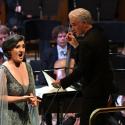
Add comment